Azərbaycanın reytinqi "mənfi" proqnoz ilə saxlandı
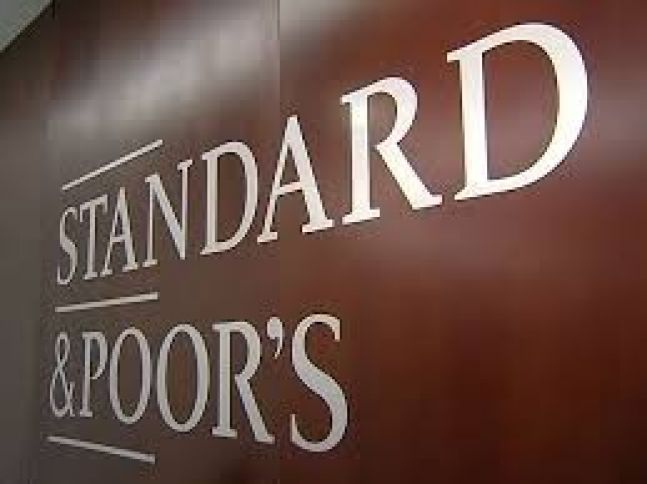
28 iyul 2017-ci il tarixində “Standard ənd Purz” (Standard and Poor’s) reytinq agentliyi Azərbaycan Respublikasının suveren kredit reytinqinin ənənəvi qiymətləndirməsini aparmış və müvafiq hesabatını açıqlamışdır.
Maliyyə Nazirliyinin mətbuat xidmətindən "Marja"ya daxil olmuş məlumata görə, agentlik Azərbaycan Respublikasının uzunmüddətli və qısamüddətli xarici və milli valyutada suveren kredit reytinini dəyişməyərək müvafiq olaraq 'BB+/B' səviyyəsində, "mənfi" proqnoz ilə saxlamışdır.
“Standard ənd Purz” reytinq agentliyinin yaydığı son hesabatda reytinqin dəyişməz olaraq saxlanılmasına əsas səbəb kimi ölkənin möhkəm fiskal mövqeyi, xüsusiylə Azərbaycan Respublikası Dövlət Neft Fondunun xarici valyutada ehtiyyatlarının mövcudluğu göstərilir.
Agentlik hesab edir ki, tədiyə balansına olan təzyiqlərin aradan qalxacağı, ölkənin iqtisadi inkişaf göstəricilərinin gözlənilən artımı və daxili bank sistemində sabitliyin möhkəmlənməsi nəticəsində reytinq üzrə proqnoz mənfidən müsbətə keçirilə bilər.
OVERVIEW
Azerbaijan's economy is slowly recovering from the 2014-2015 terms of
trade shock.
The government's fiscal and foreign exchange buffers remain significant.
We are affirming our 'BB+/B' ratings on Azerbaijan.
The negative outlook reflects the risks of the country's external
performance becoming weaker than in our baseline forecast over the next
six to 12 months.
RATING ACTION
On July 28, 2017, S&P Global Ratings affirmed its long- and short-term foreign
and local currency sovereign credit ratings on the Republic of Azerbaijan at
'BB+/B'. The outlook for the long-term ratings remains negative.
OUTLOOK
The negative outlook primarily reflects the risks of Azerbaijan's external
performance being weaker than in our baseline forecast over the next six to 12
months.
We could lower the ratings if:
Balance of payments pressures do not recede, leading, for example, to a
further decline in central bank reserves or accumulated savings in
Azerbaijan's Oil Fund (SOFAZ); or
The government's fiscal flexibility is reduced, for instance because
containing spending becomes challenging for political reasons.
We could revise the outlook to stable if balance of payments pressures abated
while the country's growth prospects and domestic banking system stability
improved.
RATIONALE
Our ratings on Azerbaijan are primarily supported by the sovereign's strong
fiscal position, underpinned by the large stock of foreign assets accumulated
in the sovereign wealth fund, SOFAZ. The ratings are constrained by weak
institutional effectiveness, the narrow and concentrated economic base, and
limited monetary policy flexibility.
Institutional and Economic Profile:Adjustment to lower commodity prices
continues but growth is set to gradually strengthen
We expect Azerbaijan to experience a second year of recession with output
contracting by 1% in 2017.
Economic performance should gradually strengthen thereafter but still
remain below that of other countries at a similar level of economic
development.
Azerbaijan's institutional arrangements remain weak and we expect limited
progress on the structural reform front over the next few years.
This year, Azerbaijan's economy has continued to adjust to lower commodity
prices. More than a year after the devaluation of the manat, the repercussions
are still being felt, not least in Azerbaijan's weakened financial sector.
We forecast the Azerbaijani economy will remain in recession in 2017 with
output projected to contract by 1% in real terms, after contracting by just
over 3% in 2016, as the devaluation of the manat and public spending cuts
constrained demand and confidence.
We project investment will begin to recover this year owing to the ongoing
work on the Southern Gas Corridor project, which is intended to bring Azeri
gas from the offshore Shah Deniz Stage II gas field (SDII) in the Caspian
first to Turkey at the end of 2018 and eventually to Europe by 2020. At the
same time, we anticipate that consumption growth will be lacklustre reflecting
elevated inflation, and the rise in precautionary savings. We also expect
exports to contract this year in real terms owing to both Azerbaijan's
participation in OPEC output cuts and the natural aging of the country's
oilfields. We understand that, absent sustained investment, oil production
will likely decline gradually over our four-year forecast horizon.
We expect the economy will turn the corner in 2018 with growth strengthening
further and reaching 3.5% in 2019. The launch of new gas exports from SDII is
the key factor underpinning this forecast. Additionally, we consider that
consumption and non-hydrocarbon-related investments should post a stronger
performance as confidence improves and inflation subsides.
Still, even with the launch of the large SDII field, we expect Azerbaijan's
growth to lag that of countries at a similar level of economic development
over the next few years. At present, gas exports account only for an estimated
2% of total exports. Even as production is expanded threefold, this is
unlikely to bring back the pre-2008 growth rates that emerged on the back of
rapid expansion of oil output at the time.
More generally, we believe that at a time of lower and more volatile oil
prices, the economic outlook for heavily commodity-reliant Azerbaijan will
depend on the authorities' reform agenda, including efforts to improve the
business environment and ultimately diversify the economy away from
commodities. At present, we do not expect significant progress on the
structural reform front.
We view Azerbaijan's institutional arrangements as weak, characterized by
highly centralized decision-making, which lacks transparency and makes future
policy responses difficult to predict. Political power remains concentrated
around the President and his administration, with limited checks and balances
in place. The referendum in September 2016, followed by amendments to
Azerbaijan's constitution, has further centralized the president's power, in
our view.
Flexibility and Performance Profile: The balance sheet is strong but balance
of payments vulnerabilities persist
A strong fiscal position is the main factor supporting the ratings.
Nevertheless, net debt has risen rapidly reflecting the materialization of
contingent liabilities at International Bank of Azerbaijan (IBA).
External position remains strong on a stock basis but downside risks
persist.
Monetary policy effectiveness is limited.
Azerbaijan's strong fiscal position remains the main factor supporting the
sovereign ratings. It is underpinned by the large foreign assets accumulated
in the sovereign wealth fund SOFAZ. We forecast these will amount to about 80%
of GDP at year-end 2017, and the sovereign will remain in a net asset position
averaging 40% of GDP over the four-year forecast horizon.
Even though the sovereign balance sheet is still strong, fiscal pressures
remain elevated. We forecast that the consolidated budget will post a deficit
of 3.2% of GDP in 2017, following deficits averaging 3% in 2015-2016. This
compares to a decade of average fiscal surpluses of almost 7% of GDP. The
projected deterioration of fiscal performance this year primarily reflects the
one-off transfer from the country's sovereign wealth fund SOFAZ to the Central
Bank of Azerbaijan (CBA), which has previously spent most of its reserves
defending the peg that was later abandoned. We understand that this transfer
is needed to underpin confidence and arrest the balance of payments crisis of
2015-2016.
Net of the transfer to CBA, we estimate the consolidated budget at close to
balance. We note the high fiscal flexibility on the expenditure side
reflecting both the high level of capital spending and the government's
willingness to quickly adjust spending when required. This has prevented the
fiscal flow performance from weakening further over the last two years.
Looking ahead, budgetary outcomes will also be supported by the weaker
exchange rate, launch of gas exports from SDII, and some recovery in oil
prices. The latter should be particularly important as Azerbaijan's government
revenues remain substantially dependent on the hydrocarbon sector. Still, we
continue to see downside risks to fiscal performance and flexibility,
particularly if keeping expenditures under control becomes difficult for
social or political reasons given the already sharp adjustment in living
standards.
Importantly, however, general government debt has expanded at a considerably
faster pace than the headline deficits imply over the last two years. This is
primarily due to the materialization of contingent liabilities in the banking
system: the government has contributed substantial resources to the majority
state-owned International Bank of Azerbaijan in 2016. In May 2017, the bank
announced its intention to undertake a debt restructuring to address its weak
financial position (see "Azerbaijan 'BB+/B' Ratings Affirmed Following
Announced IBA Debt Exchange; Outlook Remains Negative," published May 26,
2017).
On July 18, the proposed exchange was approved by the creditors. In line with
our previous expectations, the government will therefore assume additional net
debt of roughly 9% of GDP in relation to IBA--6% due to the direct assumption
of IBA's foreign liabilities, and another 3% from SOFAZ's deposit at IBA,
which we now exclude from our calculation of government liquid assets.
We do not expect IBA's debt exchange to lead to broader repercussions for
other banks. Still, we believe that the domestic banking system remains weak
and vulnerable to difficult economic conditions. The CBA reports nonperforming
loan levels of close to 12% as of May 2017 but we consider this to be an
underestimate, with the actual amount of toxic assets being higher.
Mirroring the developments on the fiscal side, Azerbaijan's external position
remains strong on a stock basis, and we expect the country's liquid external
assets to exceed external debt for the foreseeable future. Nevertheless,
Azerbaijan's net external asset position (external assets net of external
liabilities) is weakening and could decline to a level insufficient to fully
mitigate the risks from its volatile export revenue base, constraining the
government's ability to respond to potential adverse shocks in the future.
We currently project a gradual improvement in external flows, which should
help arrest the decline in accumulated buffers. However, if that does not
happen, ratings pressure could emerge. This could result from a combination of
weaker-than-projected oil prices and delays in the SDII gas project launch,
among other factors. We also note the only limited available data for
Azerbaijan's balance of payments and international investment position, which
possibly leads to an underestimation of external risks.
Our ratings on Azerbaijan remain constrained by the limited effectiveness of
its monetary policy. We believe that the increased flexibility of the manat
exchange rate has helped lessen external pressures and husband foreign
exchange reserves.
At the same time, apart from setting the country's foreign exchange regime and
undertaking interventions, the CBA's ability to influence economic
developments remains considerably constrained. We estimate that the resident
deposit dollarization remains at over 60%, which in our view severely limits
the CBA's attemp to influence domestic monetary conditions. In addition,
Azerbaijan's local currency debt capital market remains small and
underdeveloped, while CBA's operational independence remains limited.
KEY STATISTICS
Table 1
Republic of Azerbaijan Selected Indicators | ||||||||||
2011 | 2012 | 2013 | 2014 | 2015 | 2016 | 2017 | 2018 | 2019 | 2020 | |
ECONOMIC INDICATORS (%) | ||||||||||
Nominal GDP (bil. LC) | 52 | 55 | 58 | 59 | 54 | 60 | 69 | 75 | 82 | 89 |
Nominal GDP (bil. $) | 66 | 70 | 74 | 75 | 53 | 38 | 40 | 44 | 47 | 48 |
GDP per capita (000s $) | 7.2 | 7.5 | 7.9 | 7.9 | 5.5 | 3.9 | 4.0 | 4.4 | 4.7 | 4.8 |
Real GDP growth | 0.1 | 2.2 | 5.8 | 2.8 | 1.1 | (3.1) | (1.0) | 2.0 | 3.5 | 3.5 |
Real GDP per capita growth | (1.2) | 0.8 | 4.4 | 1.5 | (0.1) | (4.2) | (2.2) | 0.8 | 2.3 | 2.3 |
Real investment growth | 12.0 | 2.2 | 19.4 | 1.4 | 2.0 | (15.0) | 5.5 | 3.5 | 2.5 | 2.5 |
Investment/GDP | 20.3 | 22.3 | 25.7 | 26.6 | 27.9 | 26.3 | 25.4 | 25.1 | 24.3 | 23.7 |
Savings/GDP | 46.3 | 43.8 | 42.2 | 40.2 | 27.5 | 22.7 | 24.5 | 25.3 | 26.4 | 26.1 |
Exports/GDP | 56.4 | 53.0 | 48.4 | 43.3 | 37.8 | 46.5 | 46.5 | 46.0 | 47.6 | 47.1 |
Real exports growth | 3.6 | 2.2 | 1.5 | (1.1) | (0.5) | (1.4) | (3.5) | 2.0 | 4.0 | 4.0 |
Unemployment rate | 5.4 | 5.2 | 5.0 | 4.9 | 5.0 | 5.5 | 6.0 | 5.5 | 5.0 | 5.0 |
EXTERNAL INDICATORS (%) | ||||||||||
Current account balance/GDP | 26.0 | 21.5 | 16.5 | 13.6 | (0.4) | (3.6) | (0.9) | 0.3 | 2.1 | 2.4 |
Current account balance/CARs | 42.9 | 37.6 | 31.7 | 28.3 | (1.0) | (7.1) | (1.8) | 0.6 | 3.9 | 4.6 |
CARs/GDP | 60.6 | 57.1 | 52.1 | 47.9 | 42.4 | 50.5 | 51.6 | 51.4 | 52.8 | 52.4 |
Trade balance/GDP | 36.6 | 31.4 | 27.8 | 25.2 | 11.0 | 11.1 | 12.3 | 12.7 | 14.3 | 14.8 |
Net FDI/GDP | 1.4 | 1.2 | 1.5 | 3.2 | 1.6 | 5.1 | 2.0 | 2.0 | 1.0 | 1.0 |
Net portfolio equity inflow/GDP | (0.0) | 0.0 | 0.0 | 0.0 | 0.0 | (0.0) | 0.0 | (2.0) | (2.0) | (2.0) |
Gross external financing needs/CARs plus usable reserves | 56.4 | 56.5 | 60.2 | 61.3 | 78.5 | 107.3 | 104.1 | 90.8 | 87.9 | 85.1 |
Narrow net external debt/CARs | (80.3) | (92.3) | (101.4) | (99.5) | (109.1) | (105.8) | (101.9) | (90.5) | (87.0) | (87.8) |
Net external liabilities/CARs | (70.2) | (80.3) | (88.3) | (78.7) | (72.4) | (53.8) | (50.3) | (45.8) | (47.7) | (52.2) |
Short-term external debt by remaining maturity/CARs | 8.4 | 9.0 | 10.1 | 13.6 | 25.5 | 28.3 | 22.5 | 14.4 | 14.1 | 13.9 |
Usable reserves/CAPs (months) | 3.4 | 5.1 | 5.3 | 6.6 | 7.3 | 2.9 | 2.3 | 3.1 | 3.2 | 3.6 |
Usable reserves (mil. $) | 10,482 | 11,695 | 14,152 | 13,758 | 5,017 | 3,974 | 5,757 | 6,287 | 7,223 | 8,192 |
FISCAL INDICATORS (%, General government) | ||||||||||
Balance/GDP | 10.9 | 4.1 | 1.7 | 2.8 | (4.9) | (1.2) | (3.2) | 1.0 | 2.5 | 2.5 |
Change in debt/GDP | 0.9 | 1.1 | 0.7 | 2.2 | 13.4 | 13.5 | 6.6 | 1.1 | 0.7 | 1.2 |
Primary balance/GDP | 11.2 | 4.4 | 1.9 | 3.0 | (4.6) | (0.8) | (2.6) | 1.7 | 3.2 | 3.1 |
Revenue/GDP | 44.6 | 40.8 | 39.9 | 39.1 | 33.9 | 34.3 | 33.0 | 31.0 | 30.0 | 30.0 |
Expenditures/GDP | 33.7 | 36.7 | 38.2 | 36.3 | 38.7 | 35.5 | 36.2 | 30.0 | 27.5 | 27.5 |
Interest /revenues | 0.6 | 0.6 | 0.6 | 0.4 | 0.9 | 1.3 | 2.0 | 2.3 | 2.3 | 2.2 |
Debt/GDP | 4.9 | 5.8 | 6.1 | 8.2 | 22.3 | 33.6 | 36.1 | 34.1 | 32.1 | 30.7 |
Debt/Revenue | 11.0 | 14.2 | 15.4 | 21.1 | 65.9 | 98.0 | 109.3 | 110.0 | 106.9 | 102.5 |
Net debt/GDP | (44.7) | (47.2) | (47.6) | (43.8) | (74.9) | (60.7) | (42.1) | (38.6) | (40.0) | (40.3) |
Liquid assets/GDP | 49.6 | 53.0 | 53.8 | 52.1 | 97.2 | 94.3 | 78.2 | 72.7 | 72.1 | 71.1 |
MONETARY INDICATORS (%) | ||||||||||
CPI growth | 7.9 | 1.1 | 2.4 | 1.4 | 4.0 | 12.4 | 9.0 | 7.0 | 5.0 | 5.0 |
GDP deflator growth | 22.6 | 2.8 | 0.5 | (1.3) | (8.9) | 14.6 | 15.0 | 7.0 | 5.0 | 5.0 |
Exchange rate, year-end (LC/$) | 0.79 | 0.79 | 0.78 | 0.78 | 1.56 | 1.77 | 1.70 | 1.70 | 1.79 | 1.87 |
Banks' claims on resident non-gov't sector growth | 10.3 | 27.6 | 18.0 | 24.2 | 16.5 | (21.1) | (15.0) | 0.0 | 5.0 | 5.0 |
Banks' claims on resident non-gov't sector/GDP | 19.1 | 23.2 | 25.7 | 31.5 | 39.8 | 28.3 | 21.1 | 19.3 | 18.7 | 18.1 |
Foreign currency share of claims by banks on residents | N/A | N/A | N/A | N/A | N/A | N/A | N/A | N/A | N/A | N/A |
Foreign currency share of residents' bank deposits | 43.1 | 39.6 | 32.9 | 36.2 | 76.4 | 64.4 | N/A | N/A | N/A | N/A |
Real effective exchange rate growth | 5.1 | (2.9) | 0.9 | 11.5 | (25.0) | (17.0) | N/A | N/A | N/A | N/A |
Savings is defined as investment plus the current account surplus (deficit). Investment is defined as expenditure on capital goods, including plant, equipment, and housing, plus the change in inventories. Banks are other depository corporations other than the central bank, whose liabilities are included in the national definition of broad money. Gross external financing needs are defined as current account payments plus short-term external debt at the end of the prior year plus nonresident deposits at the end of the prior year plus long-term external debt maturing within the year. Narrow net external debt is defined as the stock of foreign and local currency public- and private- sector borrowings from nonresidents minus official reserves minus public-sector liquid assets held by nonresidents minus financial-sector loans to, deposits with, or investments in nonresident entities. A negative number indicates net external lending. LC--Local currency. CARs--Current account receipts. FDI--Foreign direct investment. CAPs--Current account payments. The data and ratios above result from S&P Global Ratings' own calculations, drawing on national as well as international sources, reflecting S&P Global Ratings' independent view on the timeliness, coverage, accuracy, credibility, and usability of available information. | ||||||||||
RATINGS SCORE SNAPSHOT
Müştərilərin xəbərləri
SON XƏBƏRLƏR
- 1 həftə sonra
- 1 həftə sonra
- 4 gün sonra
-

- 9 d. əvvəl
- 14 d. əvvəl
- 18 d. əvvəl
- 59 d. əvvəl
- 1 saat əvvəl
-
2 saat əvvəl
Mədəni sərvətləri ehtiyatsızlıqdan məhv edənlər 2 ilədək həbs oluna bilər
-
2 saat əvvəl
Şarj növbəsi? Unut - Hibridlərin yeni nəsli artıq Azərbaycanda!
- 2 saat əvvəl
- 2 saat əvvəl
Son Xəbərlər

Biznesiniz üçün QISA NÖMRƏ (Ulduz nömrə) alın
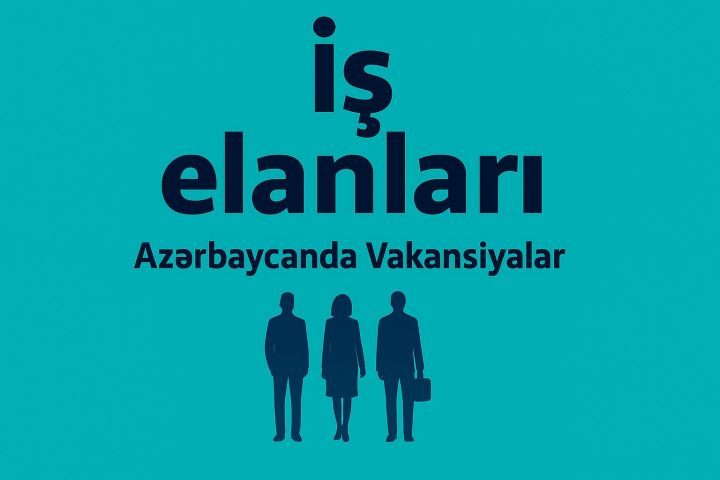
Azərbaycanda Vakansiyalar - Azvak.az

Ödənişsiz investisiya seminarı: Yatırımda təcrübə qazan

Vəhşi heyvan hücumları ilə bağlı fermerlərə çağırış edildi

10 illik proqramı 3 ilə mənimsəmək imkanı - VİDEO+FOTO

Xalq Bankda yeni təyinatlar
Ən çox oxunanlar

Şarj növbəsi? Unut - Hibridlərin yeni nəsli artıq Azərbaycanda!

Bank marketinq agentliyi xidmətləri satın alır

“Kənddən Şəhərə” Yeni il yarmarkası başlayır

Hökməli və Qobuda yolların təmirinə 1,4 milyon manat ayrıldı

Dekabrın 20-də gözlənilən hava şəraiti

Azərbaycandan Gürcüstana və İrana gedənlərin sayı artıb, Rusiya və Türkiyəyə gedənlərin sayı isə azalıb

Azərbaycana körfəz və MDB ölkələrindən gələnlərin sayı azalıb

Naxçıvanda 136 layihə üzrə yeni istehsal və xidmət sahələri yaradılıb, sahibkarlarının ixracı artıb


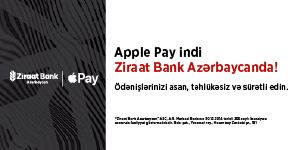









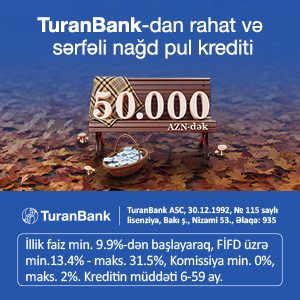



.jpg)

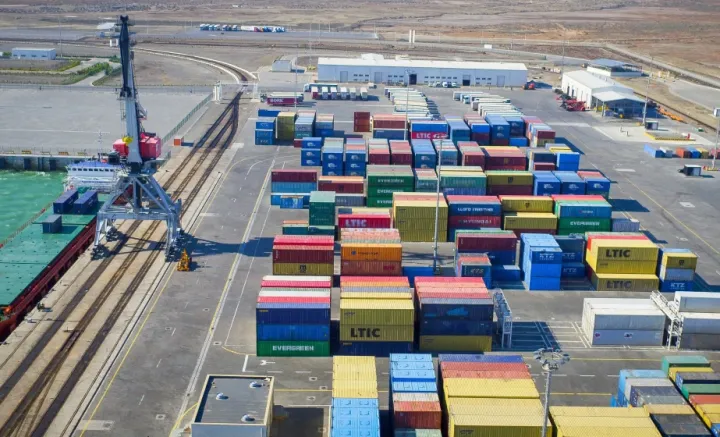



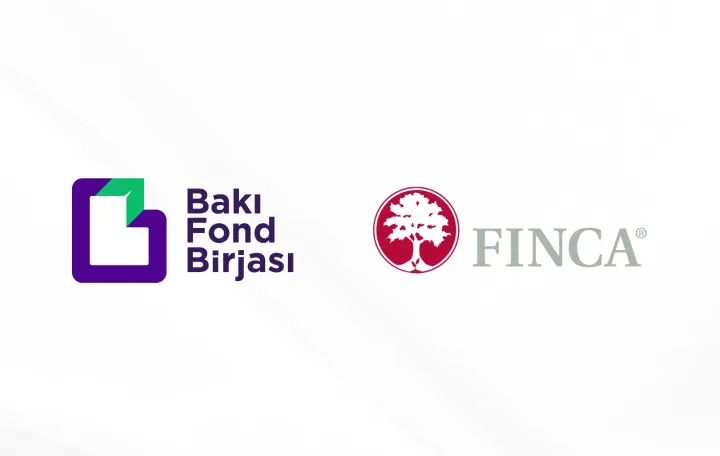
.jpg)
